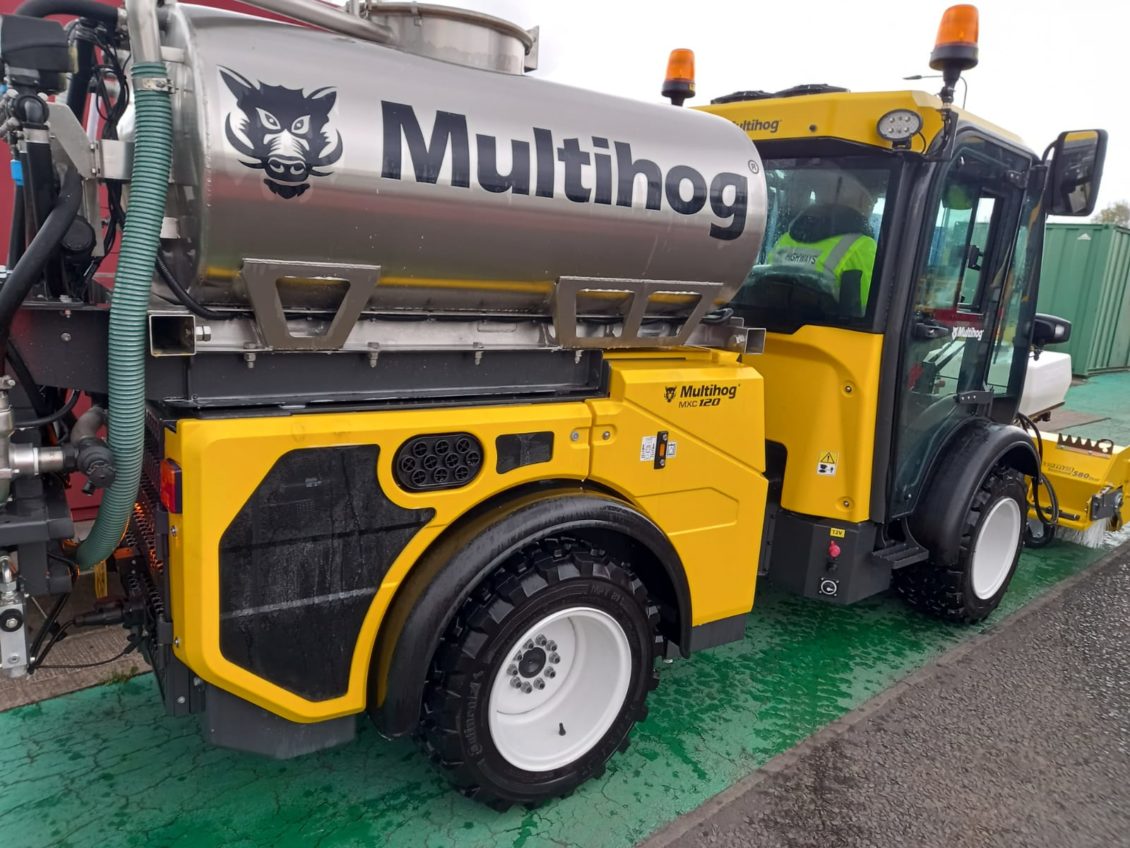Cardiff Council has a new vehicle operating in its winter maintenance fleet helping to keep the city’s strategic cycle network safe to use during the cold snap.
The Multihog vehicle sprays a brine solution across the cycleways and is being used during the current cold weather to ensure that segregated cycleways in the city are safe for cyclists to use.
Cllr Dan De’Ath, Cabinet Member for Strategic Planning and Transport at Cardiff Council said: “The new vehicle, funded by Welsh Government, is custom built to carry out a range of different functions including salting and clearing snow from segregated cycleways. Cycleways that aren’t segregated can be gritted using a traditional gritting machine, but due to the kerbs on the segregated cycleways, this isn’t possible.
“If a cyclist comes across this machine working its round, we ask that they remain a safe distance behind the vehicle or stop and dismount from the bike until the vehicle has passed by.”
Advise for Cyclists in the cold weather:Cycling in the winter weather can be very challenging in adverse weather conditions and in some cases too dangerous to ride. Please plan your journey in advance and check the weather forecast to see if it is safe to ride your bike. As with driving a car, please make sure you check your bike for any faults before taking off on your journey.
Time: Allow extra time for your journey in harsh conditions as you and all other traffic will be moving at a slower speed with longer stopping distances.
Road positioning: Road positioning on a road is important as it is essential that all road users can always see you. For this you should use lights (at the front and rear of your bike) and high visibility clothing. Never travel in a vehicles’ blind spot as this could result in a collision that could cause you and others serious damage. Always try to position yourself away from any drain covers and any other road surfaces that could be slippery when wet. Always look ahead to plan each part of your journey as this will prevent you from needing to swerve harshly at the last second.
Choose when is right to ride– if weather conditions get too severe then please do not travel by bike, as it is difficult to predict exactly the effects the weather can have on a road or a cycleway.
Be aware of others around you:Allow more time between you, other vehicles and pedestrians as the stopping distance will be increased in snowy and icy conditions.
Tyres and chains: Make sure your tyres are pumped up correctly. Look at the wall of the tyre for the manufacturers psi range for safe riding. You should have plenty of grip on your tyres before setting out and this can be checked by visually looking at them.When the surface of tread rubber is equal to the raised areas, the tyre tread depth is near the legal limit of 1.6mm. This means you should get your tyres checked and replaced by either a professional or a competent person. Make sure your chains on the bike don’t get too dry as this will result in the chain seizing up. If your chains look dry then put just one drop of oil between the plates and the rollers, but don’t use too much oil as any excess can attract dirt, which mixed with the oil can cause additional problems.
What is gritted? Cycle routes are only treated where they form part of the carriageway which is part of a designated salting route or are part of the strategic cycle network.
Dry Gritting Salt:Grit can get stuck in tyres ridges; this could result in the tyres having less grip. Please be aware of this when you are using your bike on the highway network in very cold weather.
Brine Spray– Our strategic cycle network is treated using a brine solution which is more effective that gritting with salt. Brine is strong salt/water solution and is corrosive by nature. The best way of looking after your bike is to give it a rinse down with water once you get home after cycling in cold weather.








Leave a Reply
View Comments